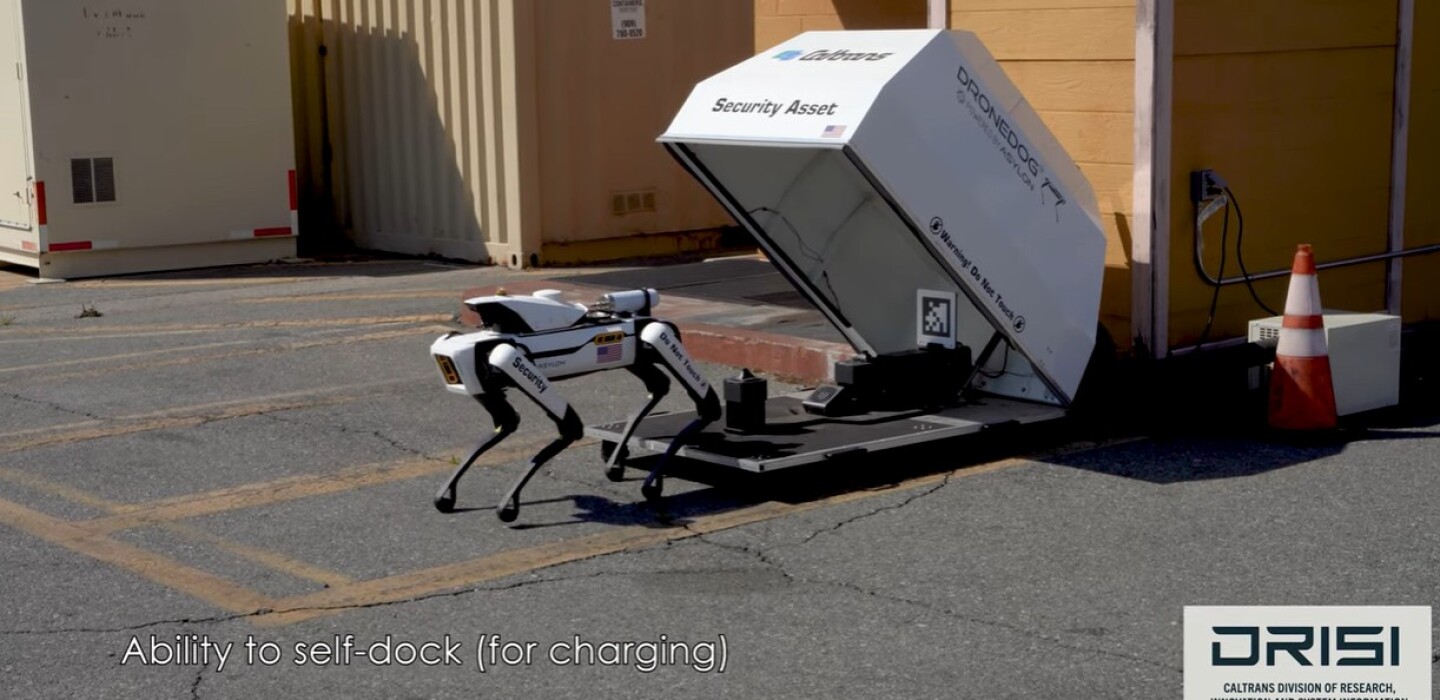During a recent presentation to the California Transportation Commission (CTC), a California Department of Transportation (Caltrans) official offered a look at how the department has been using AI and robotics as well as its future plans.
Acting Chief Data and Artificial Intelligence Officer (CDAO) Dara Wheeler provided a glimpse of the direction the department is headed during the commission’s Oct. 16 meeting, accompanied by a robotic dog named Spot.
“We often think of AI as software or algorithms, models and data, but increasingly, AI is becoming [embedded], applied in devices, in sensors, in systems that learn and adapt in real time. And that’s what’s coming for transportation, too,” Wheeler said.
Spot is being used to keep workers out of dangerous situations, like culvert and bridge inspections, she said, noting that the device was also used to provide after-hours security at a Southern California maintenance station frequently targeted by copper thieves.
Where AI and generative AI (GenAI) are concerned, Wheeler told the commission that Caltrans is evolving beyond the two proof-of-concept projects created by Gov. Gavin Newsom’s 2023 executive order. Those projects focused on using GenAI to improve roadway safety for vulnerable users and traffic management and analysis.
The first project, Enhancing Vulnerable Road User Safety, has been conducted with the help of industry partners Deloitte and Google and focuses on pre-emptively identifying problem locations in need of safety improvements, speeding up incident reporting and investigations, and generating solutions and countermeasures and investment options, she said.
The second project, Traffic Mobility Insights, has been conducted in partnership with Accenture and Microsoft and focuses on analyzing traffic patterns more quickly and improving work zone safety by analyzing more than 5 terabytes of data and 33 billion records.
In addition to the two inaugural use cases, the department completed a Microsoft Copilot proof of concept around workforce efficiency. Wheeler said this project included 168 users and generated 17,000 interactions, saving around 1,300 hours and an estimated $40,740.
Following the successes of the proof of concept, Copilot will be made available to the entire Caltrans workforce over the next several months.
Wheeler also shared future use cases the department is considering for GenAI, including bid prediction and estimation; change order management; dynamic signal phasing; design verification and error detection in plans, specifications and estimates; predictive maintenance planning; and public transit demand prediction. While she said she sees the potential for GenAI to improve these areas, the cost associated with the technology is significant and must be carefully considered.
“AI can and has been used by other state DOTs to improve bid prediction and estimation by analyzing historical data, market trends and project variables. I am excited to think about the possibilities of using AI to help with this type of workflow,” she told the commission. “But, with all of these use cases we are collecting, and because of the high cost of technology, we’re going to need to prioritize and determine which use cases have the biggest ROI so that we can prove the worthiness of using this new technology before we scale up.”
Wheeler noted that several policy documents will be released within the year related to data and AI. They include a data and AI readiness assessment, a data and AI strategic plan, an implementation road map, and a use case repository.
Eyragon is the Managing Editor for Industry Insider — California. He previously served as the Daily News Editor for Government Technology. He lives in Sacramento, Calif.

